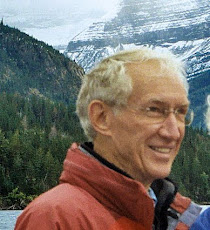I am the son of Fletch Waller, Senior, who, as an eleven year old, watched the Klan burn a cross on his front yard in protest of and to intimidate my Grandad who, as YMCA Secretary and Chair of the Akron, Ohio School Board, championed the Americanization and education of immigrants, whether white or black, whether Protestant, Catholic or Jew. Ever after, the only thing of which my father was intolerant was intolerance. He oversaw desegregation of War Dept contractors and after the war, AEC contractors. I, Fletch II, grew up believing I obviously was tolerant, was not prejudiced against anybody, was certainly not a racist. Diversity, equity, inclusion – these are all good things, aren’t they? I went to college blithely unconcerned about discrimination that was there if one troubled to look. I chose to live siloed in a Greek house with people like me, people with what Isabel Wilkerson has called “the visible assumption of centrality.”
I got a book education; I needed a life education.
The first step on the ladder was when my in-laws told me my
visiting Jewish friends from grad school could not join us to dine at Atlanta’s
Capital City Club; what was I to do when their daughter, my wife, demanded we
go? I went -- and have ever after regretted it and feel shamed when I think of
David and Charlotte. Soon after came basic training, the first time I had lived
with, worked with, and worked under direction of Blacks and Latinos. Our infantry
company had a rich mix of Southies from Boston, Puerto Ricans,
African-Americans from Newark and north Jersey, and east coast and mid-Atlantic
whites; I was one of two college grads and the only one with a post-grad degree.
(The army assigned me an auto mechanic MOS; so much for grad school.) For the first time, I was seeing suppressed prejudice between blacks, browns and whites. I got on
OK with all, officers and em’s; of course I got on well: I was unprejudiced,
educated, of leadership quality, fully deserving – wasn’t I?
That bubble of superiority sprang a leak when, at age 29, I served as chairman of the jury on a nasty gang-rape case, in Minneapolis. I found myself surprised and impressed by the diligence and good judgment of my fellow middle- and lower-class jurors who worked long hours to be thorough and responsible. My surprise made me recognize my unconscious assumption that the judgment and insight of ordinary folk were to be doubted. Recognition that maybe I wasn’t so special after all: education step number two.
Into the ‘60s: feminism and black civil rights. Outspoken women making logical arguments. Live TV coverage of non-violent,
lunch-counter sit-ins; of Freedom Rides and burned busses; of bus boycotts and
voter-registration drives (led by my college classmate Bob Moses, field
director for SNCC); of the murder of Schwerner, Chaney, and Goodman; of the March
on Washington, my still segregated hometown, and MLK on the steps of the
Lincoln Memorial; Malcom X and Mohammed Ali giving up his crown and becoming a hero to me. Then '68: worst year in America since 1860. MLK, Wallace, RFK, the Chicago convention at which Bob Moses led the Mississippi Freedom Delegation and state-sponsored violence was unleashed. Should I not be doing something? What? How? Ill wife, three kids, mortgage: what was the responsibility of an anguished, supposed liberal?
The '70s, back to Minneapolis. General Mills adopted affirmative action. Every department had to set numerical goals for blacks and women which were tallied alongside all the other objectives to determine one’s performance-based bonus. My units were in pretty good shape except for the distribution center, 90% women but no Blacks, and the Betty Crocker Kitchens, all women, some blacks, no men. We set goals in each of my departments. VP Mercedes Bates claimed there were no male home economists to recruit to the Betty Crocker Kitchens but did hire a male steward who turned out to be flamingly gay, much to the delight of the girls in the kitchens and to the sophomoric amusement of my fellow execs. The first challenge to my aversion to homosexuals. Several departments met our goals, finding perfectly capable Blacks and women in market research, advertising, promotion, packaging, etc.; even a male nutritionist for that previously all-female dept. The one exception was the BC Coupon and distribution center. When at year-end I dinged the director’s bonus half a percentage point (of salary) he left my office in a huff, hollering “why didn’t you tell me you were serious? Next year that center is going to look like a watermelon patch.” I had to haul him back onto the carpet for that one.
In the meantime, our Medial Director asked if he could
transfer me to the care of a woman physician he had hired. Sure. After my first
exam with her, I proudly proclaimed to my wife that I had been to a woman
doctor. “Big fucking deal” she told me,
maybe the first time I had heard her use the word, “I’ve been poked and prodded
all my life by doctors of the opposite sex!”
Another unconscious attitude unceremoniously exposed and punctured.
I moved on, to Marriott. I had lots and lots of
saleswomen; of a hundred directors of marketing, the females I could count on
one hand; no women regional marketing directors; no black marketers at all. Marriott
at that time, the early ‘80s, had but one Black and one woman GM but Bill
Marriott was determined on change and was supportive of my efforts in
marketing, reservations and sales. We
made considerable progress in four short years, particularly with women, less
so with people of color, but leaving much still to be done. When I briefed Bill
and Fred Malek, head of the hotel division, on my new marketing and
reservations organization, I named my director for travel industry. “Isn’t he” – former Green Beret Fred hesitated
– “ah – uh -- a bit effeminate?” “Well” I replied, “he’s gay of course but I
don’t find him effeminate”: gasps. To Bill’s credit, he soon would not go to a
travel show or event without Ed by his side. Not sure Fred ever got comfortable
– with Ed or with me.
Soon after joining Marriott, I got a call from a key woman on
our team, our event manager – hotel openings, trade shows and so on, a vital
part of the business. She wanted me to deal
with my VP for the insurance market, a pro-football hall of famer, who was hitting
on her at many of these openings and events.
My predecessor had chosen to not deal with the issue; she was angry and
testing the new boy. Our in-house football hero was a favorite of Bill’s,
getting his family down onto the Redskin sidelines every home game, and so on. He
emceed every hotel opening event. What was I to do? Should I blow the whistle on him to HR? To
Bill? I was brand new. I chickened out. I confronted the VP, who thought it was
funny – he knew he was untouchable. The events
manager continued to do good work for us but had lost respect for me. But he
did stop hitting on her. Others? Never
caught him at it.
At Westin, history repeated: my VP Sales was hitting on his
saleswomen, repeatedly. On his first offense after a warning, I moved to fire
him but the Chairman would not let me; he and the VP’s father were vacation
cabin buddies. But I made it clear to
all that I would no longer tolerate prejudicial, discriminatory, or harassment
behavior and it pretty well stuck.
The hotel industry, I
came to know, was and still is rife with sexual harassers and male
chauvinists: too many attractive young men and women, too many available
bedrooms, too easy access to booze and receptions. I fired second offender
sexual harassers but put up with and worked around anti-gay and racist
attitudes so long as they did not affect performance. But what of team? And
what did I owe victims? I had climbed some of the rungs of the diversity,
equity and inclusion ladder, but what about that “visible expectation of
centrality” and what had I learned about the inner lives of Blacks and gays and
working women? About how they saw working for Fletch.
After retirement, as President of Horizon House, a Seattle
retirement community, I encountered how difficult is inclusion, to get Blacks
and Asians to consider communal living in predominately white community. As a rowing coach I encountered the reality
of impediments that kept black kids from coming and learning to row. As Trustee
and later President of Pratt, Seattle’s leading art school, I was confronted full-on
by a Black activist with a personal rather than an organizational agenda. He had
once proclaimed me an ally but as soon as I was presiding, he became a
disruptive challenger. Through that painful episode, I learned to what extent
victimhood can be used for personal ends and that sometimes it takes being
tough to keep the train on its tracks.
In seven years of DEI effort at Pratt, in classes for all
employees under guidance of expert consultants, in working with Trustees and
employees on our Race Equity committee, I’ve come to realize that, as my
classmate Professor Al Prettyman puts it, America doesn’t have a Black problem,
America has a White problem. Al says, “colored people know all about white
people; only those whites that seek to know, know anything about colored
people.”
It took the murder of George Floyd to give me a peek into
those unknown inner lives. The anguish
and trauma our Black associates felt, their passion, so evident, their brown
associates’ empathy so genuine, it gave me a glimpse. The assumption of
centrality crumbled as I realized that I was the “other, the stranger” seeking
to be included and welcomed.
So, the education of an old white guy must continue. How do we teach people to value and to seek diversity? How do we teach people to act in spite of recognizing
otherness, a person not of my family or clan or tribe?
To paraphrase Winston Churchill: so much to learn, so little
time.








